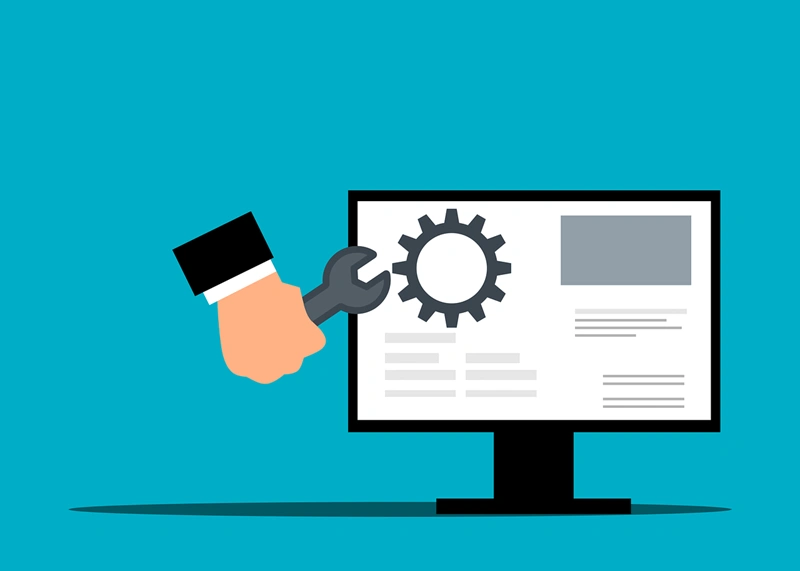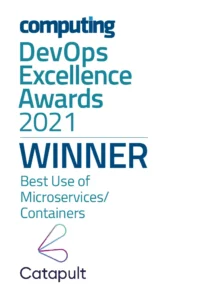The commercial blocker in your stack
Modern CTOs know that scaling a product isn’t just about adding servers or optimising code. It’s about removing the invisible barriers that quietly throttle growth. Performance bottlenecks are often treated as a technical nuisance, but in reality, they’re commercial blockers.
They slow delivery, inflate cloud bills and erode customer trust long before they trigger a major incident.
In a growth-stage business, the issue isn’t raw speed, it’s scalability. The real question isn’t, ‘Is our platform fast enough?’ It’s, ‘What’s stopping us from adding more customers and why is it getting exponentially more expensive to do it?’
Hidden inefficiencies, architectural bottlenecks, and poor scaling assumptions compound quickly as demand grows. That’s why performance testing and scaling strategy aren’t backend hygiene tasks, they’re growth levers. They protect margins, enable adoption and ensure your platform can keep up with the business, not hold it back.
The hidden cost of slow systems
Performance issues don’t always appear early. With a handful of users, everything can look fine. The danger is that these issues compound silently. As usage scales, what was once a minor delay can suddenly tip into cascading failures and full-blown outages.
That’s the real cost. Systems that appear stable in low-load conditions but collapse under scale. By the time it hits churn metrics or NPS, the damage is already done.
In high-growth environments, these small inefficiencies compound quickly:
- A 1-second page delay can reduce conversions by 7%.
- CPU saturation or inefficient queries can turn scaling costs exponential.
- Teams spend more time firefighting and less time shipping. Innovation slows. The roadmap slips.
In short, if your platform performance is unpredictable, your growth will be too.
Part 1. The CTO’s diagnostic toolkit (How to identify the bottleneck)
High-performing engineering organisations treat performance as a continuous feedback loop, not a post-mortem exercise. Before you can fix a bottleneck, you must find its true source.
1. Start with the four golden signals
Your monitoring must go beyond ‘is it up?’. Google’s SRE framework provides the four essential signals for system health – and each needs a clear SLA behind it.
- Latency. The time it takes to service a request. This is what your user feels.
Set a SLA. E.g. average response time under 100ms. Alert if it climbs. - Traffic. How much demand is being placed on your system (e.g., requests per second).
Set capacity thresholds so you know when you’re nearing limits. - Errors. The rate of requests that are failing (e.g. 500s).
Define an acceptable error budget. Trigger an investigation when it spikes. - Saturation. How ‘full’ your system is (e.g. CPU, memory, disk I/O).
Track this against known limits to prevent scaling bottlenecks.
If traffic is rising, that’s a good sign – it means demand is growing. But if error rates rise with it, you have a scaling problem. More users should never mean more failures. This is exactly what the four golden signals reveal, not just whether the system is working, but whether it can keep working as load increases.
2. Go deeper.
Using Distributed Tracing. In a microservice architecture, the Four Signals tell you what is slow, but not where. A single API call might touch half a dozen services. This is where Distributed Tracing is non-negotiable.
Tools like Datadog, New Relic, or Dynatrace provide traces that follow a single user request across all service boundaries.
A trace will show you exactly where time is being spent – 50ms in the web server, 400ms in a database call and 50ms in a downstream API. This immediately narrows your focus from ‘the system is slow’ to ‘this specific database query is slow’.
3. Find the breaking point.
Proactive Load Testing. Traditional pre-production testing isn’t enough. Your staging environment can’t replicate real traffic, user behaviour, or data volume.
This is why testing has ‘shifted right’, into production. This doesn’t mean chaos. It means using techniques such as:
- Canary Releases. Safely rolling out a new version to a small subset of users (e.g., 5%), to compare its performance against the old version in real time.
- Synthetic Monitoring. Running automated scripts that simulate critical user journeys (such as login or checkout), 24/7 from different locations. This catches regressions and regional issues before users report them.
Part 2. The bottleneck fix-it playbook (How to fix the bottleneck)
Once you’ve identified the bottleneck, you must fix the constraint. Throwing hardware at the problem is a temporary, expensive fix. True scalability comes from architecture.
Here are the most common, high-leverage fixes for performance bottlenecks.
1. The fix for slow reads. Caching strategies
- The Problem. Your application repeatedly fetches the same data from the database (e.g. a user’s profile, a product catalogue). This hammers the database, which is often the slowest part of your stack.
- The Fix. Implement a multi-level caching strategy. By storing frequently accessed data in faster, temporary storage (like memory), you avoid the expensive database operation.
- In-Memory Cache (e.g. Redis, Memcached). For data that is read often but changes infrequently. A 99% cache hit rate means you’ve just eliminated 99% of that query’s load on your database.
- CDN (Content Delivery Network). For static assets (images, JS, CSS). This caches your files at edge locations around the world, reducing network latency for global users.
2. The fix for slow writes. Asynchronous processing
- The Problem. A user request triggers a ‘heavy’ operation that blocks the response (e.g. ‘Purchase’ button triggers payment processing, email sending and PDF generation). The user is stuck waiting for all three to finish.
- The Fix. Move heavy operations off the critical path. When the user clicks ‘Purchase’, your API should only do the essential work (e.g. validate the order) and then immediately return ‘Success’ to the user.
It then places the non-essential work (sending the email, generating the PDF) into a message queue (like RabbitMQ or SQS). Separate, background ‘workers’ process these jobs at their own pace. This makes the user’s experience feel instantaneous and makes your system more resilient.
3. The fix for database saturation. Query & index tuning
- The Problem. Your database CPU is at 100%. Your distributed trace shows a specific query is taking 2 seconds.
- The Fix. This is rarely a hardware problem. It’s almost always an inefficient query.
- Add Missing Indexes. The most common fix. An index is like a phonebook for your database table. Without it, the database has to do a ‘full table scan’ (read every single row) to find the data it needs. Adding the right index can turn a 2-second query into a 20ms query.
- Refactor N+1 Queries. A classic silent killer. A developer loads 100 ‘Orders’, then loops and makes a separate database call for each ‘Customer’ (1 + 100 = N+1). This chatty I/O cripples the database. The fix is to batch-load all customers in a single query.
From bottlenecks to breakthroughs
Scaling isn’t about heroics, it’s about systems that stay fast under pressure. Performance testing and observability give you control – the ability to grow without fear that your own architecture will be the limiter.
The most effective CTOs frame performance as a business metric, not just an engineering KPI. A slow platform isn’t a technical issue, it’s a brand issue that erodes trust and drains revenue.
If your roadmap is ambitious but your platform feels sluggish, the first step isn’t a rebuild. It’s visibility.
Catapult helps engineering leaders identify bottlenecks, stabilise performance and embed scalable architectures that keep pace with business growth.
Schedule a Performance Audit to uncover where your platform is losing speed, and how to turn that friction into momentum
























